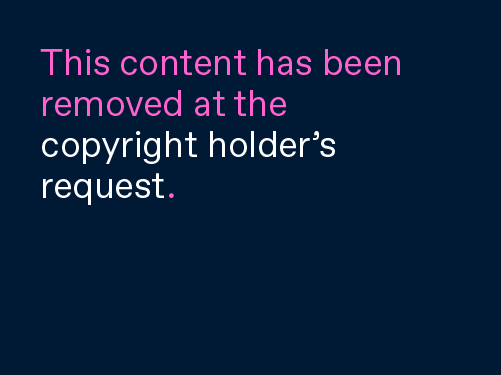
I remember it like it was yesterday. I was just starting out and knew I needed to look into saving for my future. I was beginning at ground zero with $0 saved for retirement.
This was in line with the average 401(k) balance for a young person starting out in their 20s. My employer was offering 50% for every dollar we contributed up to 6% of our salary. I was all set to start making some moves into investing for my future so I got started right away. Then boom! Barely into starting out on my journey, the housing market crashed in 2008.
The Great Recession rolled in and people were losing homes and jobs left and right. I got my pink slip in 2009. I felt like I had just put $2 in my account. Not only did I lose my job, but also my employer contributions including thousands of dollars due to the fact you had to be an employee for 5 years to be fully vested. I was discouraged, but not defeated.
I always keep an up to date resume so I started sending it out. It took months, but I finally got a new gig that allowed me to be 100% vested from Day 1. This has helped me grow my nest age from $6,500 in 2010 to past a quarter of a million ($250,000) over a fairly short time later thanks to a raging stock market!
Total Vanguard Assets beginning from 2010


After I read a Fidelity report that stated 401(k) millionaires are on the rise, I figured I could be one of them too.

According to numerous financial pundits, it is recommended that you even need a minimum of $1 million to retire.

First, I had to get to $100k and that put me on the path to eventually passing the $250,000 mark. So you see, you have to have a goal. This is what I did to make it happen.
1) Set a goal
You can’t get anywhere without first knowing where you want to go. Therefore, I set a goal for myself of $100,000. I did this because after doing some research, I found that the first $100k is the hardest.
However, once you reach this milestone you can stop contributing completely to your 401(k) and still become a millionaire in 30 years without adding another penny.
As long as the stock market continues what it has done over the last 40 years (1980-2020), then you can expect returns of 10% a year. This will get you where you want to go over the long term. I’ll show you.
In 2012, I had $25,000 invested and by 2015, I reached my goal of $100,000. I have more than doubled my money since that time. You see how much faster your retirement accounts go up once you reach $100k. That money is doing all the heavy lifting for me.
It can take 5-10 years to reach the first $100k, but the next $100k may take only 3 years. Therefore, every year the next $100k takes less time.

2) Cut expenses
I learned about house hacking from listening to a podcast on Bigger Pockets years ago. House hacking allows you to cut your housing expenses by 25% or more. Basically, you rent out your property and decrease your mortgage payment by having renters and becoming a landlord.
The other thing you can do is move to a less expensive location in order to save and invest the difference. You can also do this with a partner or roommate as you will have shared expenses that lower your living expenses.
I got my expenses down very low which allowed me to go from a savings rate of $1 to $5 dollars a day or 3% of my income to eventually working my way up to saving and investing 40% of my income.
Around 2013, my savings rate was 15%. Then it went to 25% in 2015. And I got it to around 40% by 2018.
I would incrementally increase my savings rate by 1% a month or a year depending on what I had going on. This is one of the best ways to give yourself a raise without feeling like you are being deprived.

Sacrificing when you are young and loose like a mongoose is best. Limiting your expenses during the lean years are well worth it.
Consider this. According to Vanguard, while the average 401(k) savings balance is over $100,000, the median account balance is much less at $25,775.
| Age | Average 401(k) balance | Median 401(k) balance |
| Under 25 | $5,419 | $1,817 |
| 25 to 34 | $26,839 | $10,402 |
| 35 to 44 | $72,578 | $26,188 |
| 45 to 54 | $135,777 | $46,363 |
| 55 to 64 | $197,322 | $69,097 |
| 65 and up | $216,720 | $64,548 |
3) Pay off debt
There was a time I was paying $448.65 a month for a car payment. I also had a $20,000 personal loan at $333 a month. Talk about a money suck!

This was draining my ability to save more. Once I got those items paid off, I started redirecting that money to my savings and investments.
That allowed me to put money into an emergency fund, brokerage account, 401(k) and my Roth IRA.
4) Start an emergency fund
The only way to stay out of debt is to have money in the bank so you will not need credit in the first place. Access to credit can become a nightmare when you have to start paying a large percentage of your income toward managing it. Therefore, I found a good number to start with is $1,000.
Then I worked my way up to $5,000. Again, I moved this number up to $10,000.
My personal suggestion is for people to have at least a minimum 3-6 month emergency fund. You can keep the credit card debt off you, if you can have money set aside for car and home repairs that tend to pop up at exactly the wrong time.
5) Be consistent
No matter what, I made sure to put money in my retirement accounts . If the choice was between having fun on a vacation or saving $10,000 first, I choose to save. Responsibility first, fun later. That is what my dad always used to say.
I save and pay myself first before doing anything else. That includes paying the rent! After my 401(k) and Roth IRA contributions are made, then I pay the bills.
6) Keep increasing your income
I increased my income through both annual cost of living increases, asking for and receiving pay raises, or getting a promotion. I was able to increase my income by 50% from my early 20s.
Every time I earned more money, I increased my contributions. However, please know that income is not enough alone to build wealth. It’s what you save. Notice the Vanguard chart below shows that higher income does not correlate with a higher 401(k) balance.
| Annual income | Average 401(k) balance | Median 401(k) balance |
| Less than $15,000 | $8,260 | $1,356 |
| $15,000 to $29,999 | $13,069 | $4,020 |
| $30,000 to $49,999 | $29,740 | $10,439 |
| $50,000 to $74,999 | $66,033 | $27,630 |
| $75,000 to $99,999 | $113,143 | $54,020 |
| $100,000 to $149,999 | $177,597 | $91,470 |
| $150,000 and above | $298,851 | $154,989 |
7) Live on cash
I know you hear this all the time, but cash is king and it is best to stay away from plastic. Debt just weighs you down. That money could be put to work for you in Mr. Market.
America likes to reward investors and shareholders by paying dividends. The more you invest the more you earn. Without doing any additional work, you are making money from income you already earned years ago. That is truly how you work smarter and not harder.
8) Invest in growth stocks
I started with a few thousand bucks and put it into Amazon and Apple back in May 2013. You can see from below that was the prices they were selling for back then. Amazon was going for $258 a share.
| AMAZON.COM INC | Buy | 5.0000 | $258.84 |
| APPLE INC | Buy | 3.0000 | $463.66 |
After investing more with both companies, as you should not only buy the product but the stock as well, the stock splits and appreciation has caused my investments to go up. I remember being amazed that Amazon had gone up to almost $2k a share. I even took a picture of it. Cause you know, seeing is believing. Back then it was going for $1,897 a share.

Amazon is now $3,300 a share! That is inching closer to the S&P 500 price of $4,000. Keep in mind the S&P 500 is made up of over 500 stocks.
Amazon is just one company. Its evaluation is pushing closer to what the evaluation is for 500 companies. Amazing! That is when I learned growth stocks can make you rich.
9) Invest in index funds
I invest with Vanguard because they have the lowest expense ratios I have seen. You can invest in the VITSX or VTSAX and get a low expense ration of around 0.003% and 0.04%, respectively.
The goal is to keep maintenance costs low as this will eat into your money later when you take those required monthly distributions (RMD) .
That is a good reason open up a Roth.
10) Have a Roth IRA
The Roth has no RMDs. You can let it ride forever or whenever you do take money out it is tax-free. Instead of paying interest on distributions with your 401(k), you could get access to them for free with a Roth.
If you are unable to do a Roth due to income limitations, then you can do a backdoor Roth. This allows you to convert your 401(k) into a Roth with a conversion ladder. Due to the Roth allowing you to make after-tax contributions, this is the superior investment vehicle.
Find a way to get one and watch that money go in after-tax and come out tax-free because you have already paid taxes on it.
And there you have it folks.
As of this writing, I have continued to watch my investments go up and continue to invest regularly. It has been awesome to watch my money grow. It has been very rewarding making those early sacrifices in exchange for building more wealth.
I have more money and freedom than I have ever had. All the sacrifice was worth it in the end.
My next money goal is 401(k) millionaire.
Keeping track of my net worth, investment portfolio, spending habits and increasing my savings have all helped me get here.
So my advice to you all is to keep stacking that dough.







































































